It's Time For Corn July 7th 2015
Time for some Maize... Maize known in some English-speaking countries as corn, is a large grain plant domesticated by indigenous peoples in Mesoamerica in prehistoric times.
The leafy stalk produces ears which contain the grain, which are seeds called kernels. Maize kernels are often used in cooking as a starch. The six major types of maize are dent, flint, pod, popcorn, flour, and sweet.
We planted forty plants in an 4 x 8 pattern and it worked out fine! We planted yellow and white corn and cannot wait to taste both together!

"Say what??? Me? Oh... Thank You"
Did You Know? -
Corn Belt - The area of the United States where corn is a principal cash crop, including Iowa, Indiana, most of Illinois, and parts of Kansas, Missouri, Nebraska, South Dakota, Minnesota, Ohio, and Wisconsin.
- The official grain of Wisconsin is corn.
- Nebraska is the 'Cornhusker State.'
- Washington, Missouri, is known as the Corn Cob Pipe Capital of the World
How About Some Trivia?
• An average ear of corn has 800 kernels, arranged in 16 rows.
• There is one piece of silk for each kernel.
• A bushel of corn contains about 27,000 kernels.
• Each tassel on a corn plant releases as many as 5 million grains of pollen.
• Corn is an ingredient in more than 3,500 grocery products.
• One bushel of corn can make 33 pounds of sweetener, 32 pounds of starch, or 2 1/2 gallons of ethanol fuel.
• Corn is the 3rd most important food crop of the world measured by production volume, behind wheat and rice. In terms of acreage planted, it is second only to wheat.
In the 1930s, before the machines were available, a farmer could harvest an average of 100 bushels of corn by hand in a nine-hour day. Today's combines can harvest 900 bushels of corn per hour—or 100 bushels of corn in under 7 minutes!
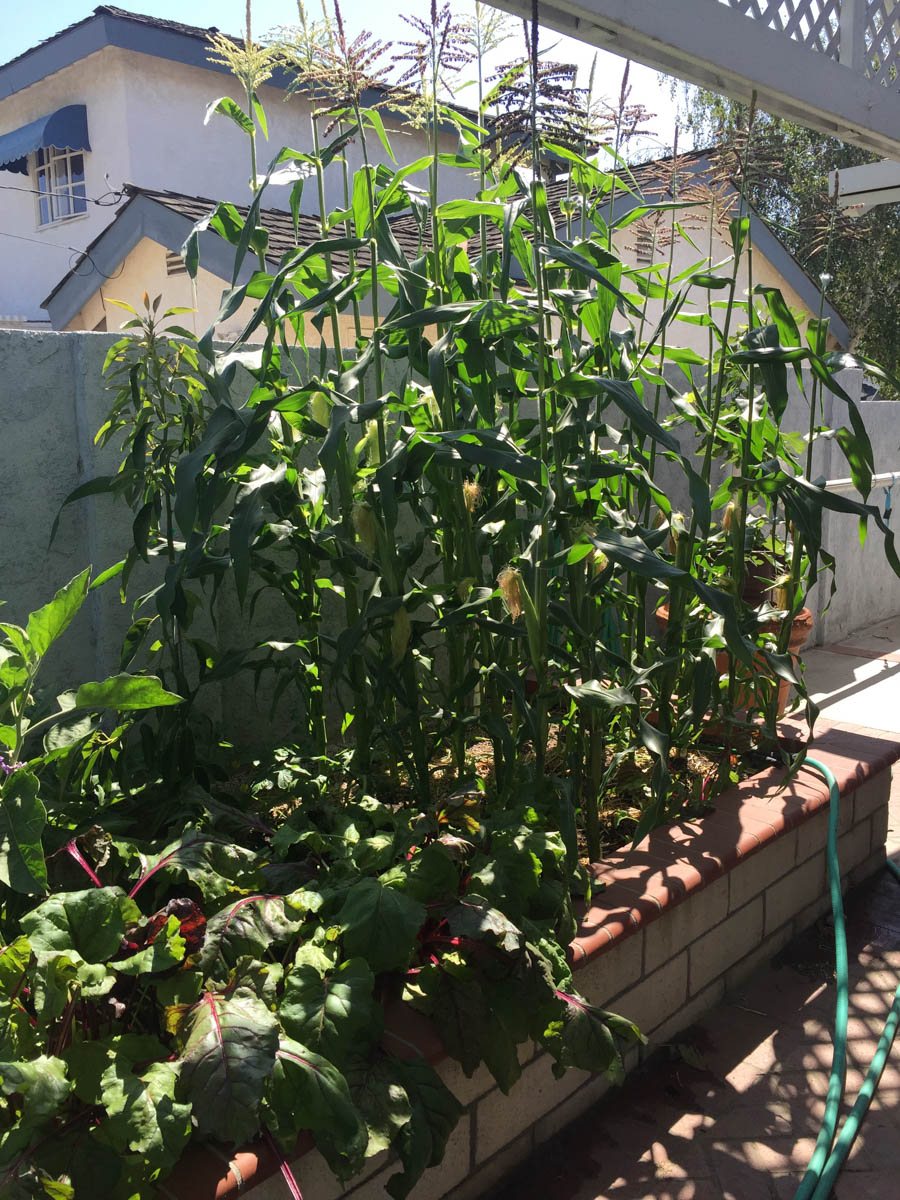
Our plants are getting the right size... Eight feet tall and then some
But First, Some Birds And Bees
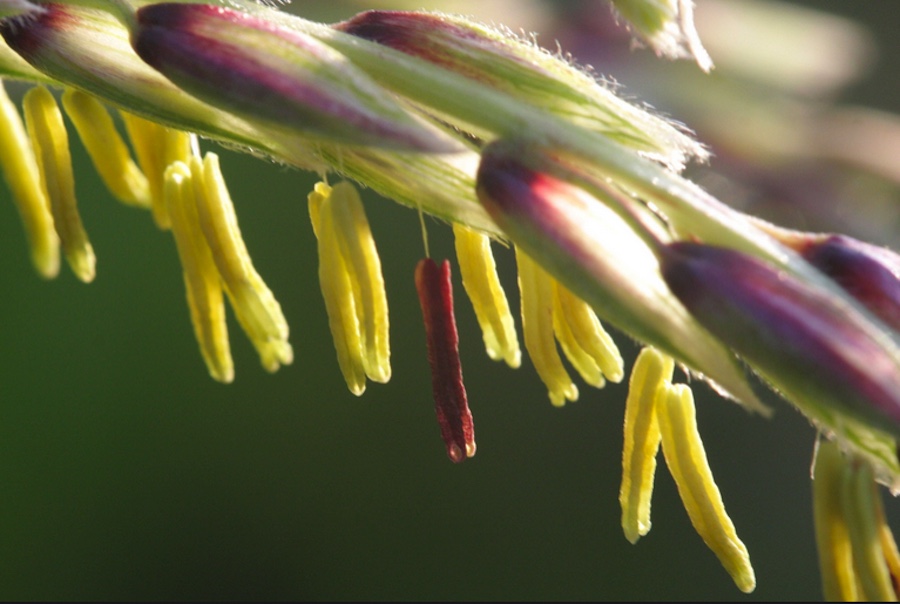
The tassels on the top of the plant are the male part of the plant
and
can produce 5,000,000 pollen grains
Did You Know? - The apex of the stem ends in the tassel, an inflorescence of male flowers. When the tassel is mature and conditions are suitably warm and dry, anthers on the tassel dehisce and release pollen. Maize pollen is anemophilous (dispersed by wind), and because of its large settling velocity, most pollen falls within a few meters of the tassel.
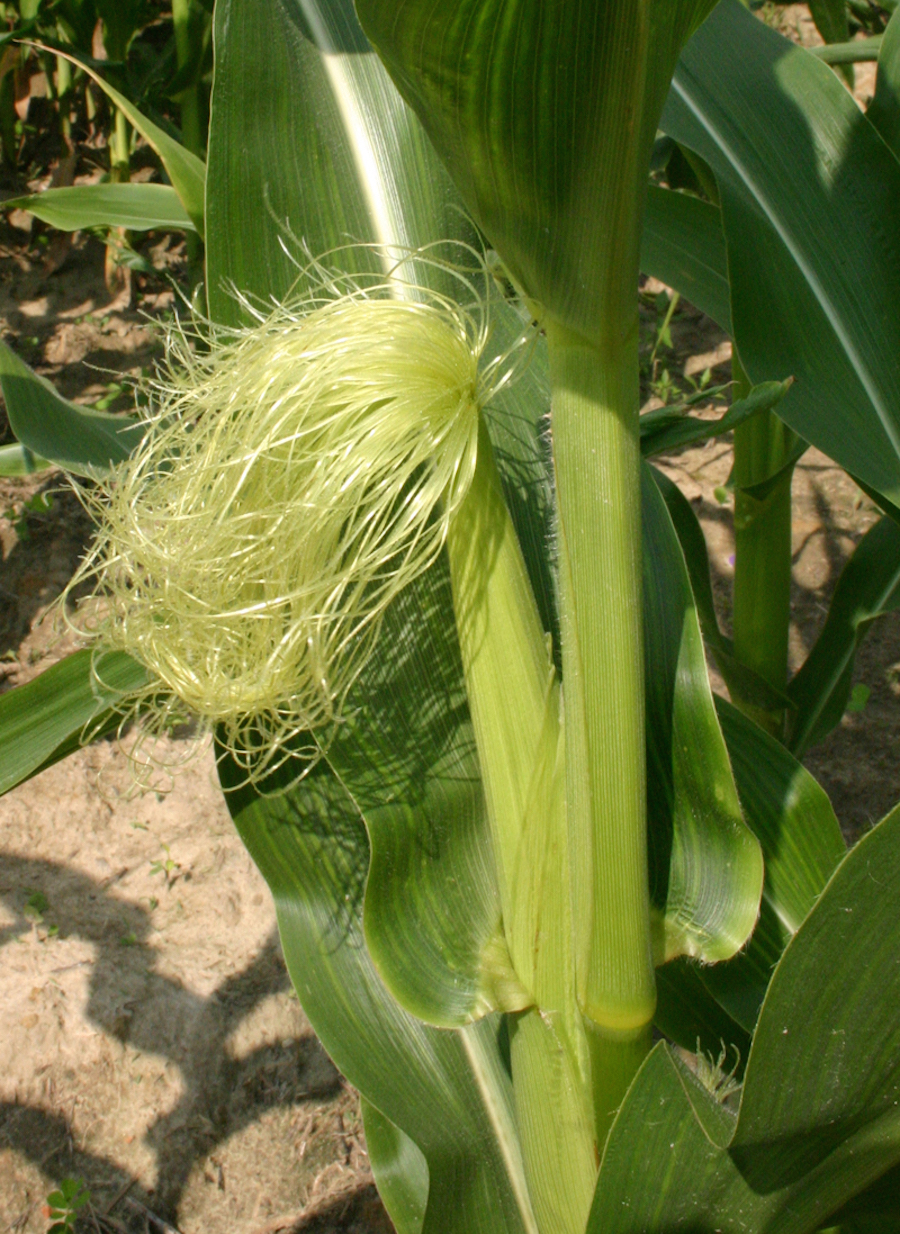
The female part are the ears... Remember there is one strand of silk
for each kernel on the cobb
Did You Know? - Ears develop above a few of the leaves in the midsection of the plant, between the stem and leaf sheath, elongating by about 3 mm/day, to a length of 18 cm (7 in).
They are female inflorescences, tightly enveloped by several layers of ear leaves commonly called husks. Certain varieties of maize have been bred to produce many additional developed ears. These are the source of the "baby corn" used as a vegetable in Asian cuisine.
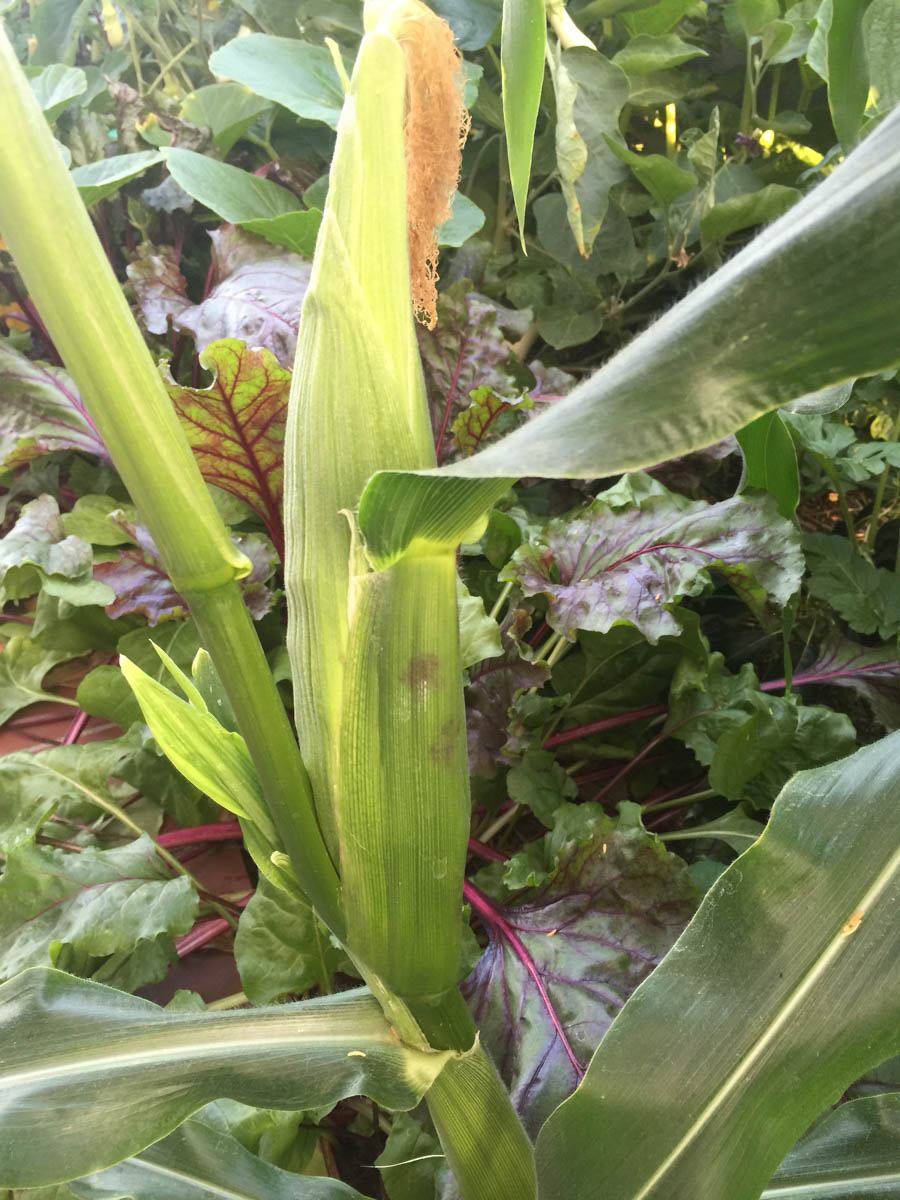
The ears are ready as the silks are turning brown
Did You Know? - Young ears can be consumed raw, with the cob and silk, but as the plant matures (usually during the summer months), the cob becomes tougher and the silk dries to inedibility. By the end of the growing season, the kernels dry out and become difficult to chew without cooking them tender first in boiling water.
Let's Get Down To Business
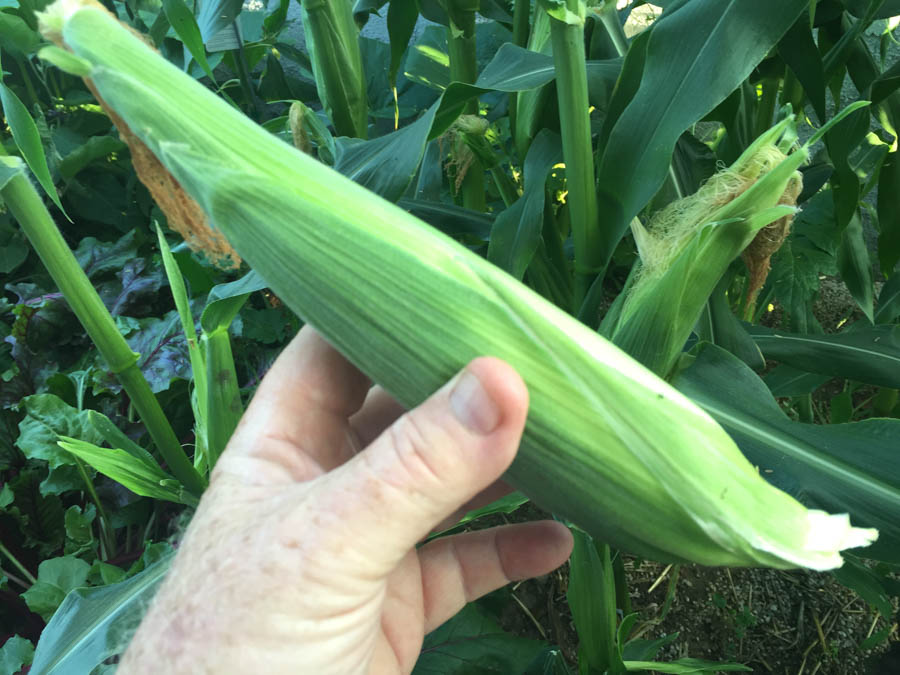
Simply tear the ear off the stalk
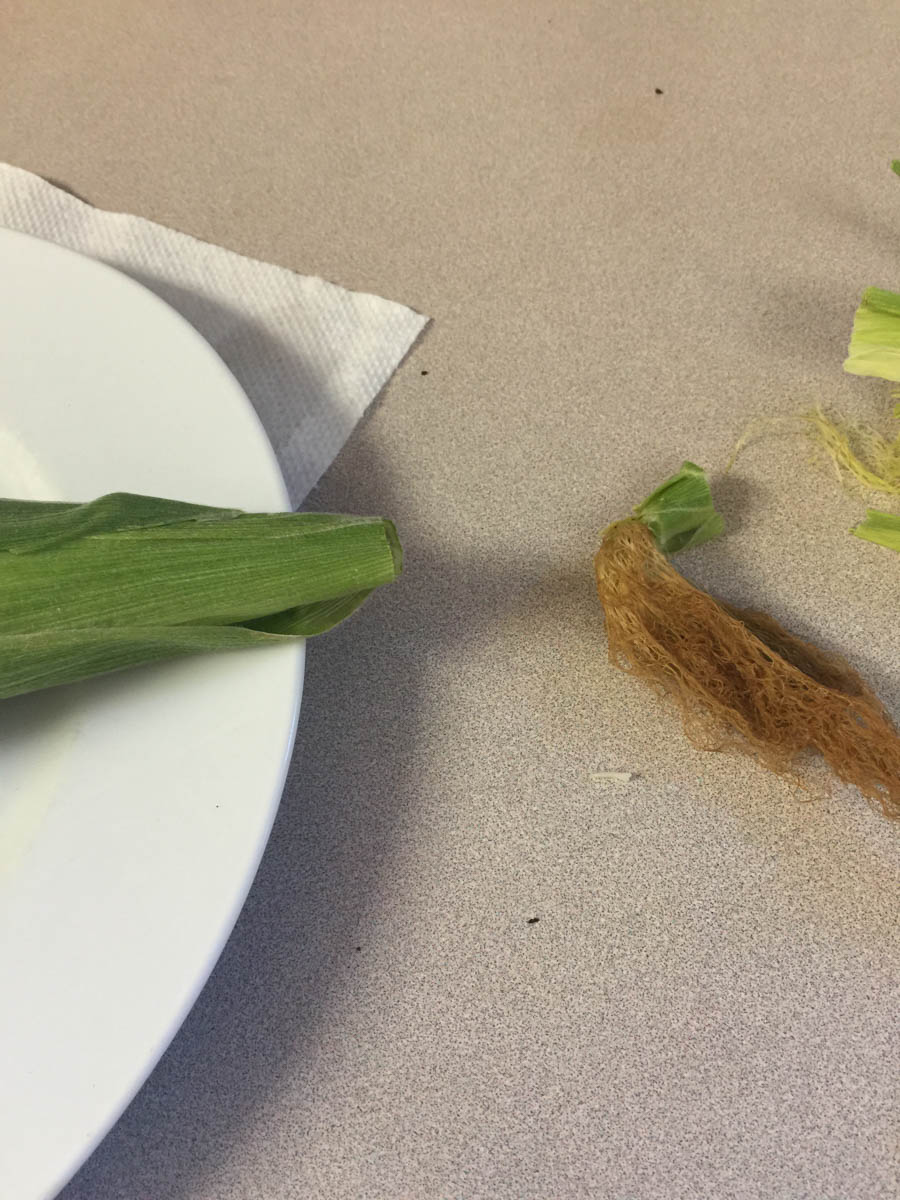
Bring it in the house and cut off the exterior silk
Did You Know? - Before they were domesticated, maize plants only grew small, one-inch long corn cobs, and only one per plant. Many centuries of artificial selection by the indigenous people of the Americas resulted in the development of maize plants capable of growing several cobs per plant that were usually several inches long each.
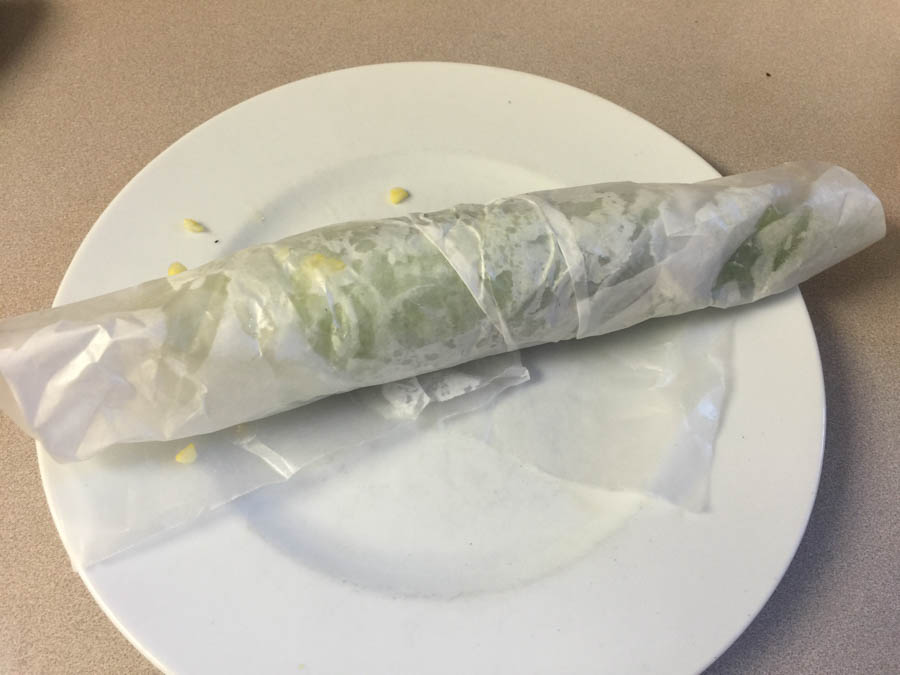
Wrap the corn in wax paper and microwave the corn
for about 3 minutes an ear...
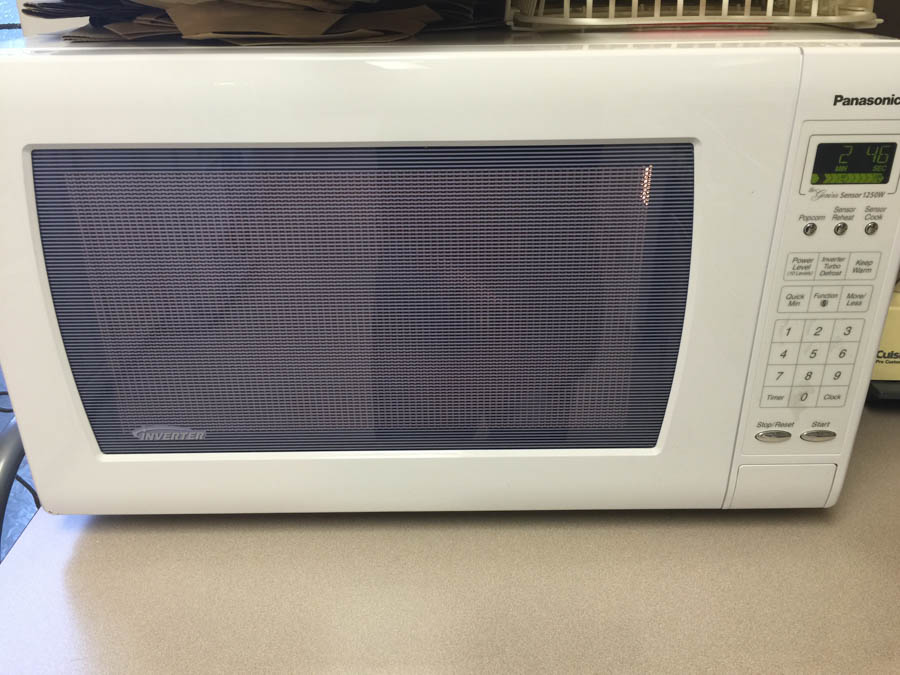
There is enough moisture in the corn to fog up the viewing window
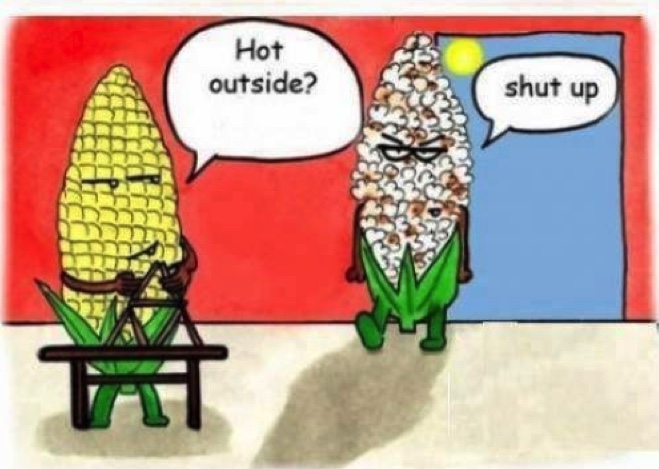
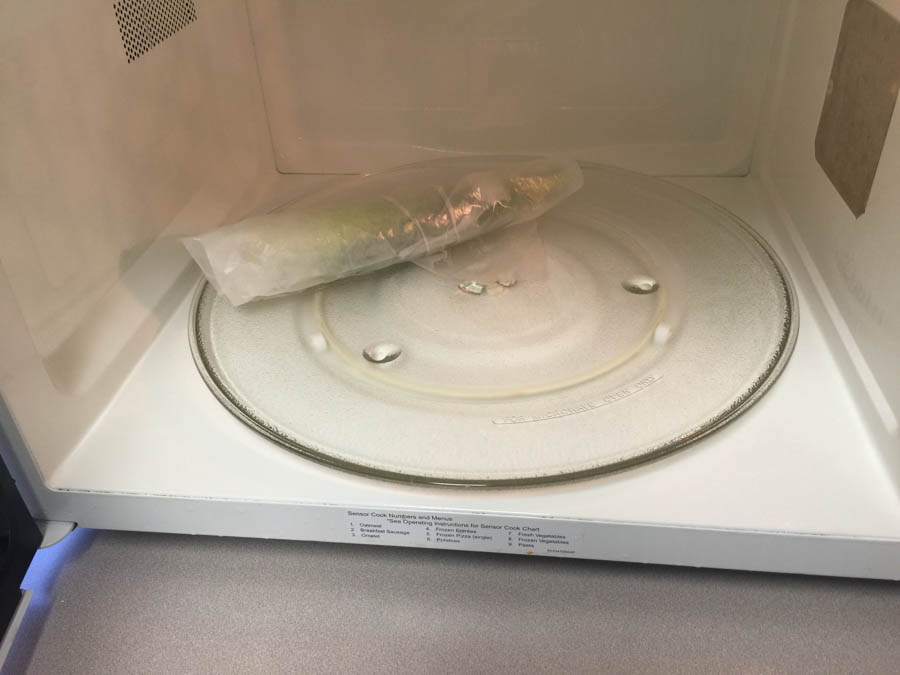
Careful... It is hot!
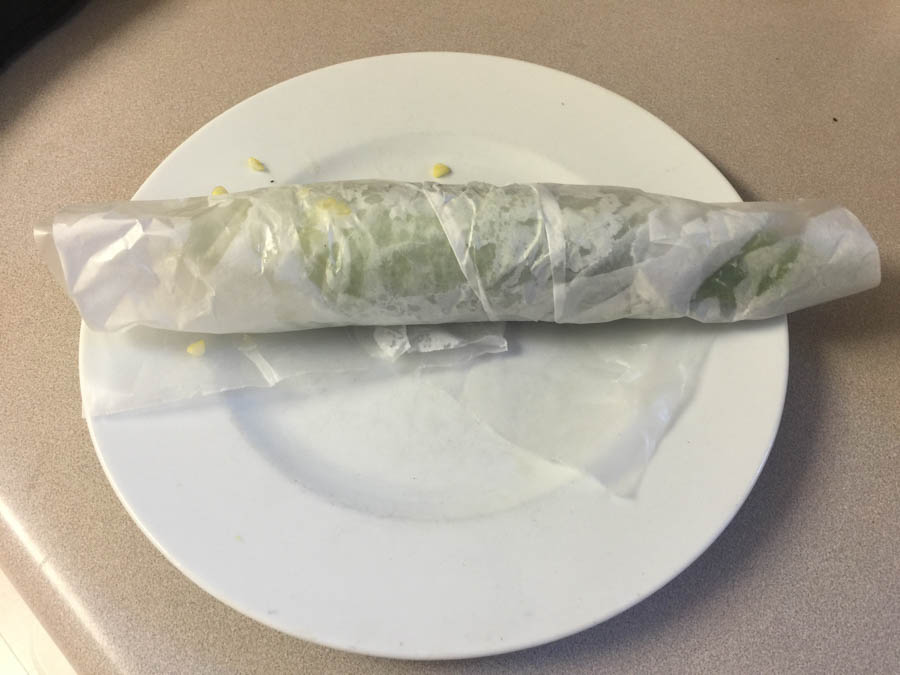
Take it out and let it cool just enough so you can handle it...
The
leaves and silk need to be removed
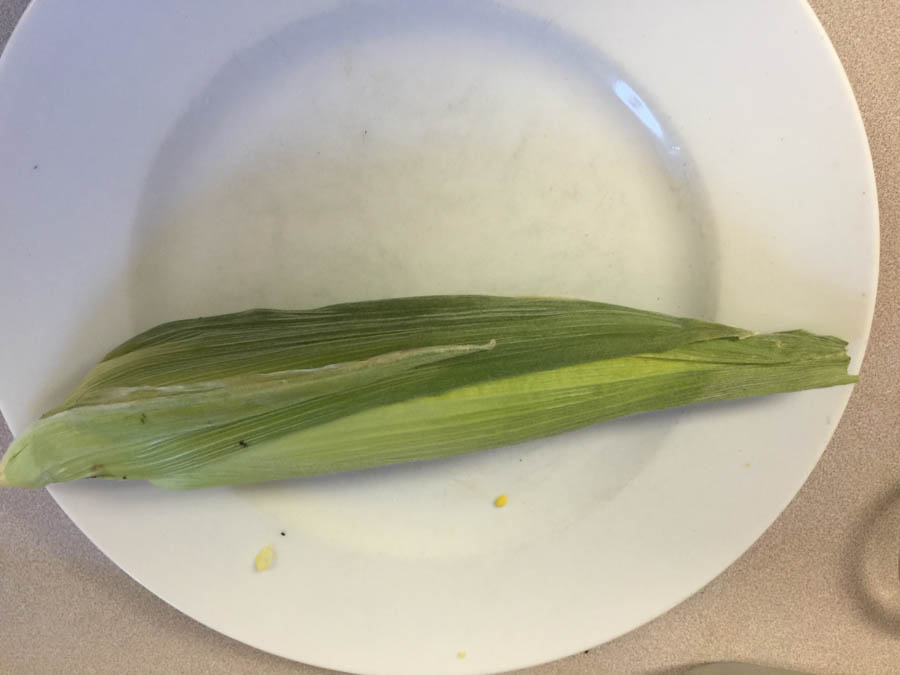
Remember... It is still hot
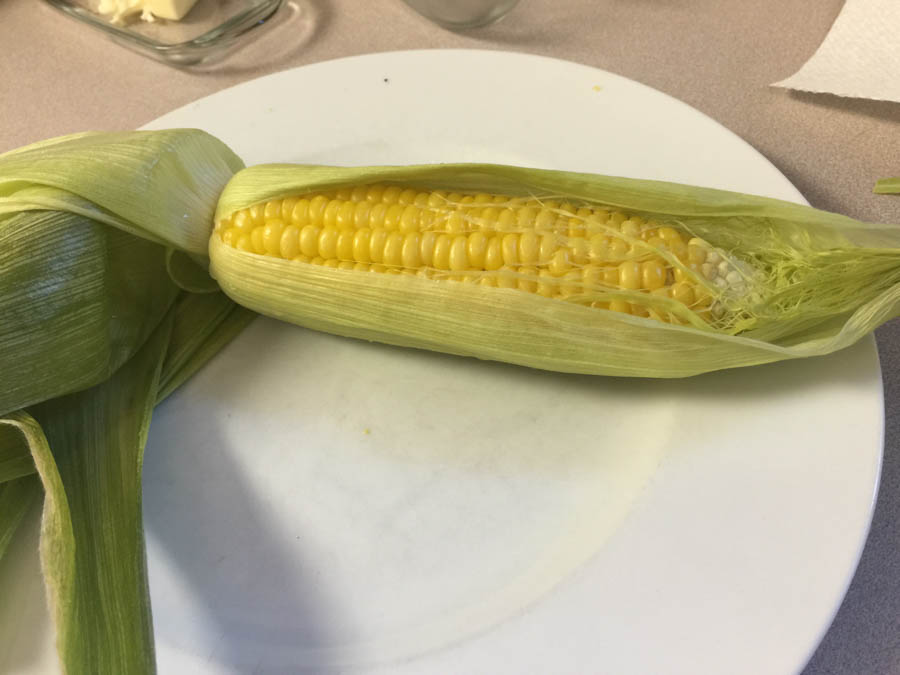
Anticipation!!!
Yummy!
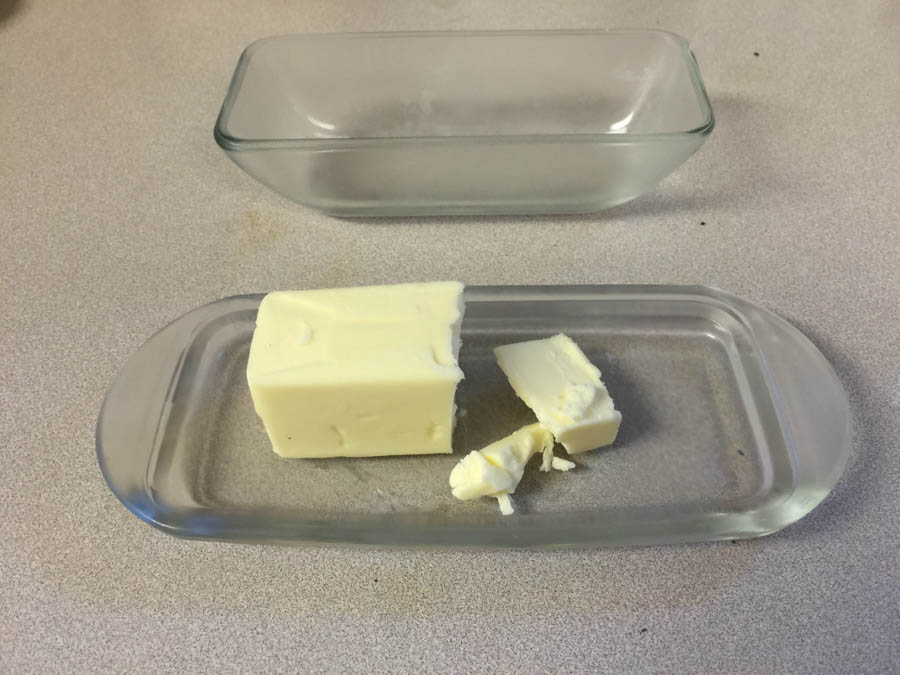
A little bit of butter
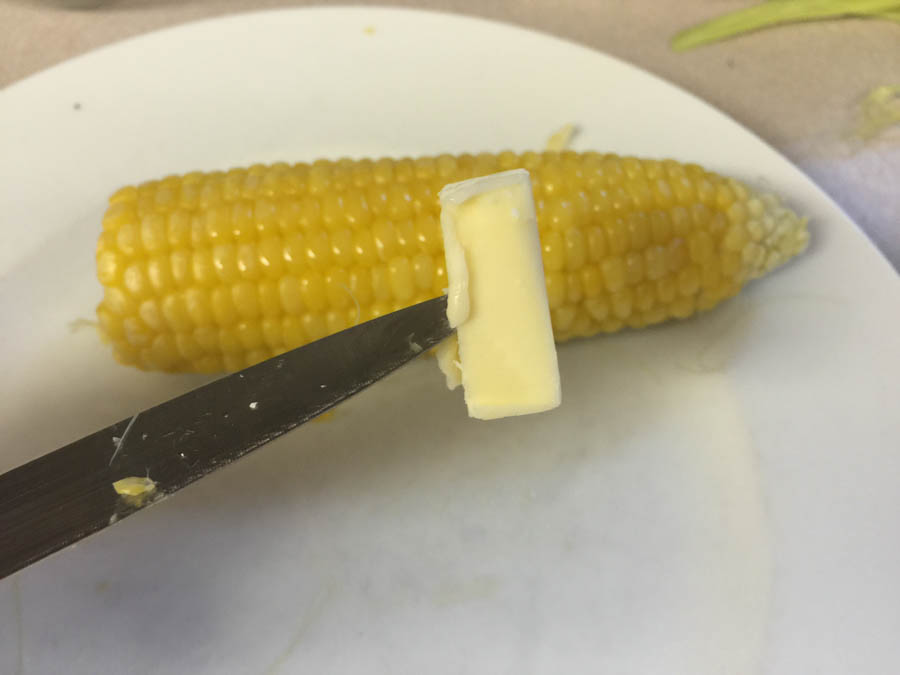
Just a little
goes a long way...
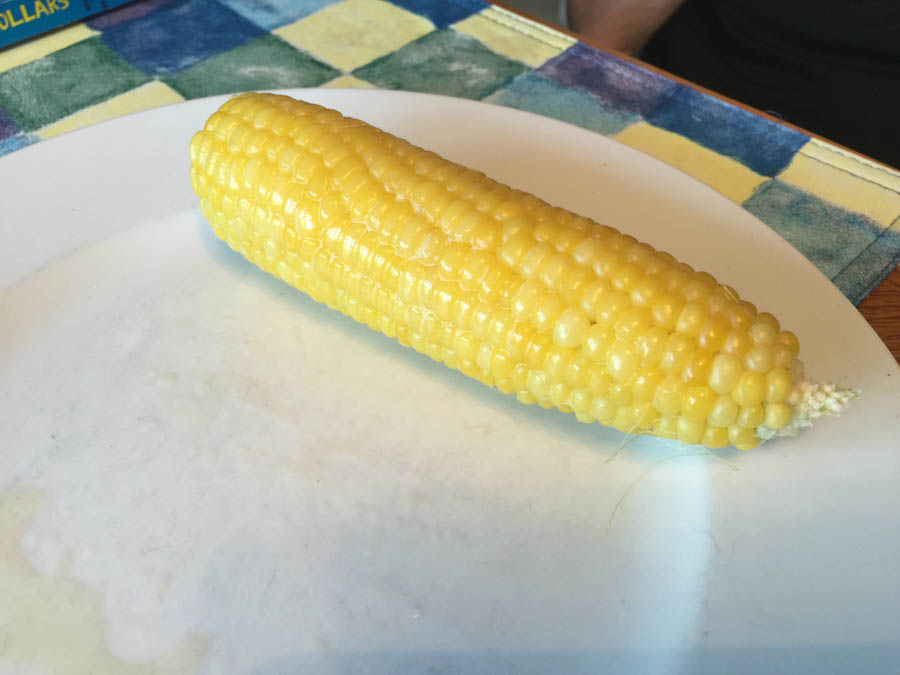
Ready for a treat!!!
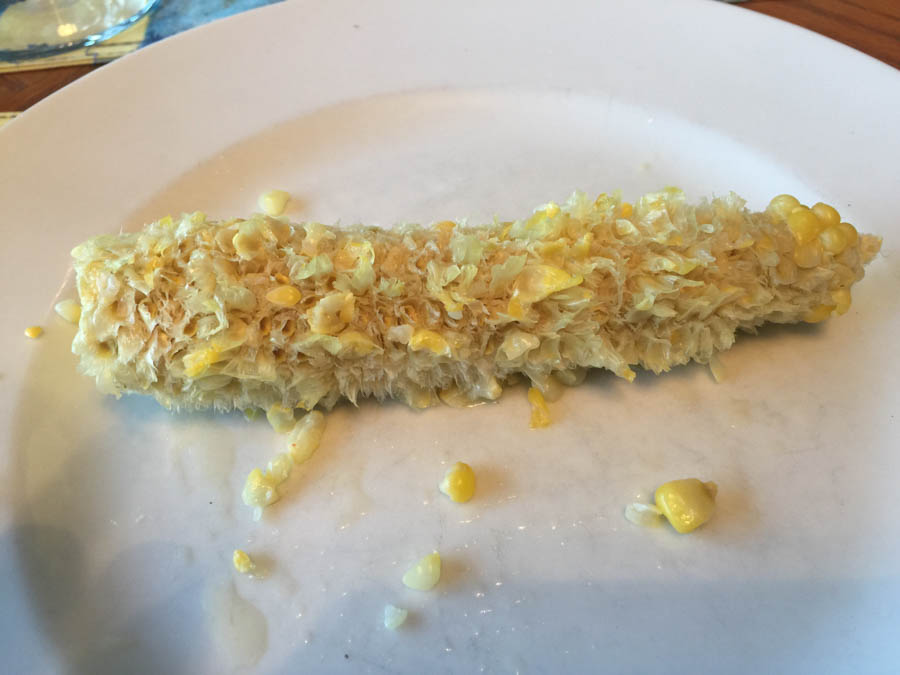
3.5 seconds later it is gone
